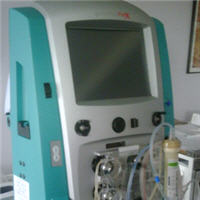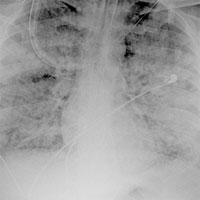Tag: mortality

Effect of Decompressive Laparotomy on Organ Function in Patients with Abdominal Compartment Syndrome
Decompressive laparotomy has been advised as potential treatment for abdominal compartment syndrome (ACS) when medical management fails; yet, the effect on parameters of organ function differs markedly in the published literature.... read more

Hemophagocytic Lymphohistiocytosis: Potentially Underdiagnosed in ICUs
Overall, 7 out of 9 patients (77.8%) suffering from aHLH remained undiagnosed. Awareness of this life-threatening syndrome, especially in ICUs, should be raised. The inclusion of ferritin into the admission lab panel for... read more

Mitochondrial Function in Sepsis
The authors were tasked with developing five specific questions regarding mitochondrial function in sepsis within the context of the Acute Dialysis Quality Initiative 14 (ADQI XIV) meeting held in Bogotá, Colombia, in late... read more

Positive End-Expiratory Pressure Lower Than the ARDS Network Protocol Is Associated with Higher Pediatric ARDS Mortality
Patients with PARDS managed with lower PEEP relative to FiO2 than recommended by the ARDSNet model had higher mortality. Clinical trials targeting PEEP management in PARDS are needed. This was a multicenter, retrospective... read more

Early application of continuous HVHF can reduce sepsis and improve the prognosis of patients with severe burns
Early application of high-volume haemofiltration (HVHF) benefits patients with severe burns, especially for those with a greater burn area (≥ 80% TBSA), decreasing the incidence of sepsis and mortality. This effect may... read more

Operation Timing and 30-Day Mortality After Elective General Surgery
Elective general surgery appears to be comparably safe at any time of the workday, any day of the workweek, and in any month of the year. The binary outcomes of 32,001 elective general surgical patients at the Cleveland Clinic... read more

Increasing the Number of Medical Emergency Calls Does Not Improve Hospital Mortality
With adjustment for patient factors, illness, and comorbidities, increased emergency calling rates were not associated with reduced in-hospital mortality. Efforts to increase calling rates do not seem warranted. We studied... read more

Presenting Symptoms Independently Predict Mortality in Septic Shock
More than one third of patients with septic shock presented to the emergency department with vague symptoms that were not specific to infection. These patients had delayed antibiotic administration and higher risk of mortality... read more

Survival outcomes after prolonged ICU length of stay among trauma patients: The evidence for never giving up
Prolonged intensive care unit length of stay (ICU-LOS) is associated with high mortality for medical and surgical patients. Existing literature suggests that this may not be true for trauma patients.The results reveal that... read more

The Value of 24/7 In-House ICU Staffing 24/7 Intensivist in the ICU
Staffing of high-volume, high-intensity ICUs with 24 × 7 intensivist coverage facilitates the system changes, which allow ICU teams to provide 24 × 7 critical care.... read more

Pressure ulcers in ICU patients: Incidence and clinical and epidemiological features
Pressure ulcers in ICU patients: Incidence and clinical and epidemiological features: A multicenter study in southern Brazil. The main objective is to evaluate the incidence and risk factors of pressure ulcers (PU) in adult... read more

The Efficacy of ECMO for Severe ARDS
The H1N1 epidemic demonstrated that extracorporeal membrane oxygenation (ECMO) use in the most critically ill patients with acute respiratory distress syndrome (ARDS) resulted in a substantial decrease in mortality. The CESAR... read more

Predictors of In-Hospital Mortality After RRT Calls
Despite wide adoption of rapid response teams across the United States, predictors of in-hospital mortality for patients receiving rapid response team calls are poorly characterized. Identification of patients at high risk... read more

Intubation in Special Patient Populations: Intracranial Hemorrhage
Lidocaine has weak evidence to support its ICP blunting effects. Fentanyl may be a better choice. Ketamine is a reasonable alternative to etomidate during induction. No differnce in mortality exists between usage of succinylcholine... read more




